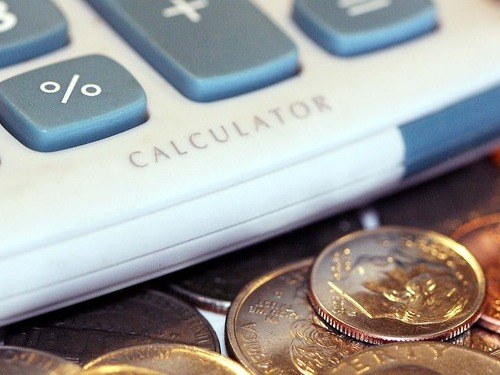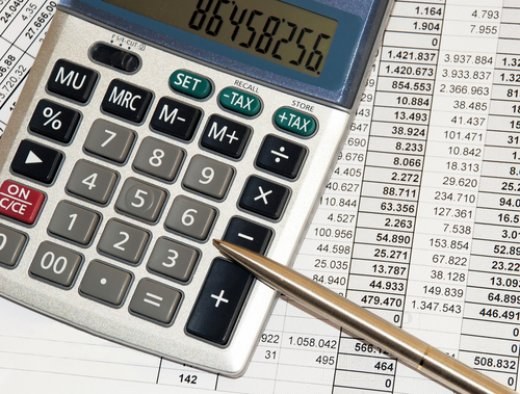Tip 1: How to calculate the elasticity coefficient
Tip 1: How to calculate the elasticity coefficient
Elasticity in the economy is the percentage change in one indicator relative to another. Coefficient elasticity is calculated, for example, to characterize the changes in the relationship between the demand for goods and the consumer's income, between demand and the price of the goods.

Instructions
1
Calculate the coefficient of elasticity of demand forAccording to the formula: E = (ΔQ / Q1) / (ΔI / I1), where: - Q - the volume of goods purchased; - I - consumer income. For calculation, determine the change in consumer demand for a given type of goods, provided that the price for it will be the same. Suppose, for a month in the store, mobile phones worth 200 thousand rubles were purchased, next month - 210 thousand rubles. Prices for phones remained the same.
2
Calculate the percentage change in the demand for mobile phones: (210-200) / 200 * 100% = 5% - demand for mobile phones for the month increased by 5%.
3
Calculate the percentage change in the income of buyers. The dynamics of the income of the population can be determined from the statistical data of your region. Let's say that for a month the average wage of the population has changed from 21,000 rubles. up to 22 000 rubles. Calculate the percent change in income for the period: (22 000-21 000) / 21 000 * 100% = 4.8%, that is, the income of the population increased by an average of 4.8%.
4
Calculate the elasticity of demand for mobilephones according to the formula given in paragraph 1. The coefficient of elasticity of demand for mobile phones by revenue will be: Е = 5% / 4.8% = 1.04. This figure means that with a change in consumer income by 1%, demand for this category of goods will change by 1.04%.
5
Calculate the coefficient of elasticity of demand forprice by the formula: Е = (ΔQ / Q1) / (ΔР / Р1), where: - Q - the volume of purchased goods; - Р - the price for the goods. For an example calculate the elasticity of demand for the price of mobile phones. Determine the change in consumer demand for this type of product. Suppose, the demand for them has increased by 5% (item 2). The average price of one phone sold increased from 8,000 to 8,300 rubles.
6
Calculate the percentage change in the average price of the phones sold: (8,300-8,000) / 8,000 * 100% = 3,8%. Consequently, the average price of the phone sold for the month increased by 3.8%.
7
Calculate the elasticity of demand for mobilephones according to the formula given in clause 5. The coefficient of elasticity of demand for mobile phones at a price will be: Е = 5% / 3.8% = 1.32. This figure means that if the price of mobile phones changes by 1%, the demand for this category of goods will change by 1.32%.
Tip 2: How to calculate the elasticity of demand
The sensitivity of the market to changes in commodity prices, consumer incomes and other factors of market conditions is reflected in the indicator elasticity, which is characterized by a special ratio. Coefficient elasticity Demand shows how quantitatively the volume has changed Demand when the market factor changes by 1%.

Instructions
1
You should consider that there are several indicators elasticity Demand. Coefficient elasticity Demand At the price reflects the degree of quantitative change Demand With an increase or decrease in prices by 1%. In this case, three variants are distinguished elasticity. Inelastic demand takes place in the case whenThe amount of goods purchased increases at a slower rate than the price decline. The demand is elastic, when a price reduction of 1% leads to an increase Demand more than 1%. If the purchased quantity of goods increases at the same rate as the price falls, then there is a demand for a single elasticity.
2
In the analysis elasticity you can calculate the ratio elasticity Demand On income. It is determined by analogy with the elasticity Demand at a price as a degree of quantitative changeOf consumer income by 1%. Due to the fact that with the increase in income the possibility of acquiring goods increases, this coefficient has a positive tendency. If the coefficient elasticity Demand On income is extremely small, then it is a matter of essential goods; if on the contrary, it is very large - that about luxuries.
3
In addition, there is a cross-ratio elasticity. It characterizes the degree of change Demand for one product when the price of another item is changed by 1%. This indicator can take both positive and negative values. If the coefficient of cross elasticity More than zero, then the products in question areinterchangeable, for example, pasta and potatoes. With an increase in the price of potatoes, the demand for pasta is increasing. If this coefficient takes a negative value, then there are complementary goods, for example, a car and gasoline. With the growth of prices for gasoline, the demand for cars is significantly reduced. If the coefficient elasticity is zero, then the goods are independent of each other, and a change in the price of one commodity does not affect the volume Demand another.







